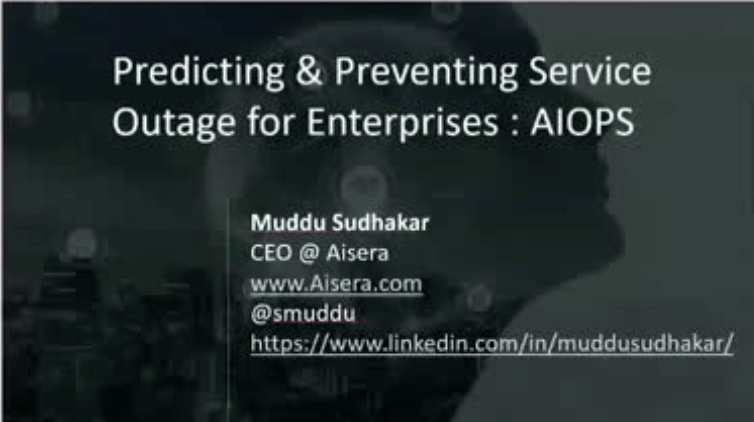Predicting and Preventing Service Outage Failures for Real-Time Applications

Predicting and Preventing Service Outage Failures for Real-Time Applications
Presented by
Muddu Sudhakar, CEO, Aisera
About this talk
More than 40% of Enterprise customers are “very dissatisfied” with their service’s availability. Thirty-nine percent of outages take up to 12 hours to resolve. Just one hour of downtime for an average-sized enterprise costs $540,000. That same Enterprise experiences, on average, 87 hours of downtime per year, costing $46 million annually. Customers are done with this. They want 0% unplanned service downtime. In this talk, we will start from quantifying the combinatorial complexity of predicting service degradation and/or outages and introduce a fully automated, empirical-driven ML/AI pipeline to discover low-frequency signals leading to future major service problems.
Key Takeaways:
- Concrete examples of how the networking industry is leveraging the latest techniques in ML/AI and workflow automation
- Advanced de-noising and automated annotation techniques to discover low-frequency signals embedded in a massive amount of input data
- The importance of empirical data analysis as a precursor to designing the ML algorithm pipeline

Predicting and Preventing Service Outage Failures for Real-Time Applications
Presented by
Muddu Sudhakar, CEO, Aisera
About this talk
More than 40% of Enterprise customers are “very dissatisfied” with their service’s availability. Thirty-nine percent of outages take up to 12 hours to resolve. Just one hour of downtime for an average-sized enterprise costs $540,000. That same Enterprise experiences, on average, 87 hours of downtime per year, costing $46 million annually. Customers are done with this. They want 0% unplanned service downtime. In this talk, we will start by quantifying the combinatorial complexity of predicting service degradation and/or outages and introduce a fully automated, empirical-driven ML/AI pipeline to discover low-frequency signals leading to future major service problems.
Key Takeaways:
- Concrete examples of how the networking industry is leveraging the latest techniques in ML/AI and workflow automation
- Advanced de-noising and automated annotation techniques to discover low-frequency signals embedded in a massive amount of input data
- The importance of empirical data analysis as a precursor to designing the ML algorithm pipeline
